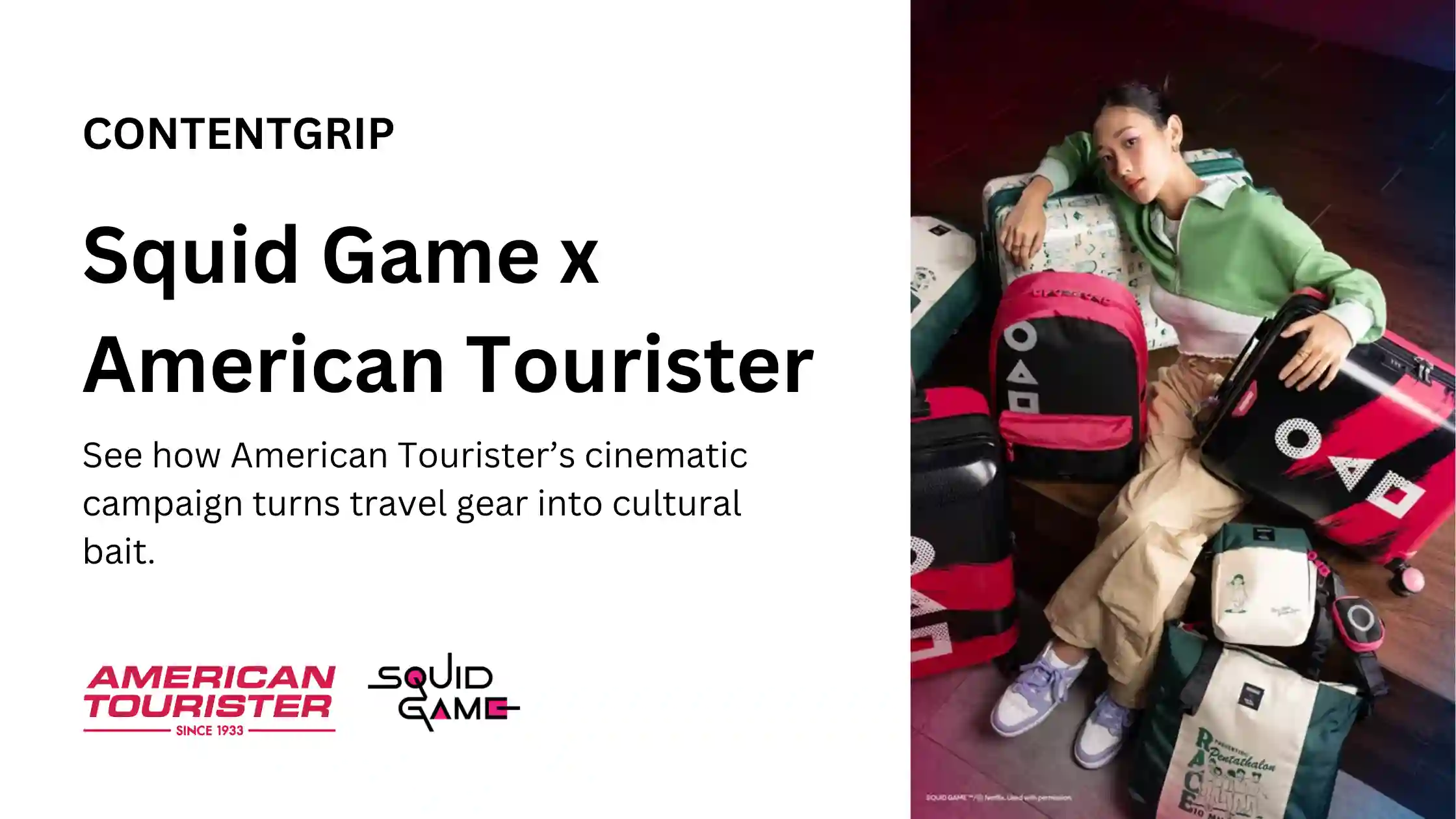American Tourister turns Squid Game fandom into fashion-forward travel gear
Netflix’s cult hit meets carry-on chic—here’s how a travel brand is riding cultural obsession to build fan affinity.

Travel brand American Tourister is betting on fandom to fuel its latest marketing move—a stylish, cinematic crossover with Squid Game ahead of the hit series’ third-season premiere on June 27.
This article explores how the brand is turning a cult Netflix series into a pop culture-infused product push, what the campaign reveals about cross-industry IP collaborations, and why experiential storytelling might be the next big play for consumer marketers.
Short on time?
Here’s a table of contents for quick access:
- What happened: A Squid Game travel drop with cinematic flair
- Pop culture partnerships are no longer a novelty—they’re strategy
- What marketers should know

What happened: A Squid Game travel drop with cinematic flair
American Tourister has unveiled a limited-edition luggage collection themed around Netflix’s Squid Game, launching just weeks before the series returns for Season 3.
Crafted in partnership with creative agency Blak Labs Singapore, the campaign is built around a cinematic short film. It reimagines the series’ infamous invitation card moment, with masked guards and mysterious envelopes popping up in everyday settings. The story culminates in an arena where invite-holders gather—travel cases in hand—poised for a symbolic take-off.
The luggage lineup includes two lines:
- The ‘Soldier Series’ in the franchise's signature black-and-pink motif, mimicking the guards' aesthetic
- The ‘Game Series’, which plays on the green-and-cream palette of the show’s contestants, complete with playful, cryptic iconography
Offline activations and giveaways are set to accompany the launch across markets, encouraging fans to “join the game” both in-store and online.
Pop culture partnerships are no longer a novelty, they’re strategy
American Tourister’s move isn’t an isolated one. It’s part of a broader wave of Squid Game-branded campaigns across Asia, all using the show’s visual language and fan base to create cultural touchpoints.
- In Malaysia, Tealive partnered with Netflix on themed drinks, snacks, and merch.
- Johnnie Walker in Manila released a limited-edition bottle featuring its mascot in a Squid Game tracksuit.
- Lazada Singapore gamified its 12.12 sale with Squid Game-style mechanics.
- Hong Kong’s KALOS brick toy brand created an immersive pop-up with life-size character builds and exclusive collectibles
These campaigns reflect a growing marketing trend: pop culture crossovers that go beyond novelty and into the realm of branded world-building. When executed well, they don’t just sell products—they generate earned media, drive UGC, and deepen emotional connection with fans.
What marketers should know
The Squid Game collab offers marketers a blueprint for riding the fandom wave with cultural sensitivity and smart execution. Here’s how:
1. Fandom is a distribution channel
Instead of traditional media spend, American Tourister is riding on the organic pull of Squid Game’s fandom. The cinematic spot is built for virality—and for fan-fueled sharing. Marketers can tap into this by co-creating with fan communities rather than just advertising to them.
2. Storytelling sells—especially when you cast the customer as the hero
The campaign doesn’t just show off luggage. It puts the customer inside the Squid Game narrative, making them part of the experience. This kind of narrative immersion builds emotional buy-in. Think beyond unboxing—what’s the story your product lets people step into?
3. Cross-industry IP licensing is on the rise
Collaborating with entertainment franchises is no longer just for fast fashion or fast food. Travel, alcohol, toys, and even logistics are in the game. For B2B marketers, this could mean looking at strategic co-branding or shared audience plays that add cultural weight to your brand.
4. Physical activations still matter
American Tourister is blending digital with in-person experiences, including in-store displays and giveaways. While digital often dominates the budget, physical touchpoints still drive brand memorability and social content creation.
By fusing cinematic storytelling with globally recognized IP, American Tourister has managed to turn travel gear into a fan collectible—and a conversation starter.
For marketers, the takeaway is clear: cultural capital is now as important as product features. In a world where attention is scarce, storytelling that taps into fandoms and emotional worlds may just be the most efficient way to win hearts—and wallets.




